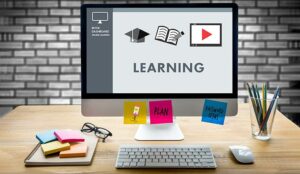A strong team thrives on trust, collaboration, and shared learning.
When team members feel comfortable sharing ideas, innovation and problem-solving improve, but not everyone approaches teamwork in the same way.
Understanding different working styles can help build a more effective and supportive team.
To find out more, we asked Richard Brimble, UNDERSTANDING & LEARNING LTD, to explain what makes a great team and how there are two types of team members.
Video: What Sort of Team Player Are You?
Watch the video below to hear Richard explain what makes a great team and how there are two types of team members:
With thanks to Richard Brimble, UNDERSTANDING & LEARNING LTD, for contributing to this video.
This video was recorded when Richard was a panellist on our 2022 webinar ‘Managing Change in the Contact Centre‘
What Makes a Great Team?
Great teams are built on open communication and mutual trust. When people feel safe to contribute, ideas flow more freely, and collective learning happens faster.
However, some individuals naturally work well in a team, while others prefer to operate independently.
“In really emotionally connected, great teams, ideas come from open conversation because the teams believe and trust one another. Your choice to share your ideas is something determined by the norms and beliefs of your culture.”
Studies on group learning have shown that those who embrace teamwork pick up new skills and knowledge more quickly.
They are open to collaboration and willing to adapt. In contrast, those who prefer to work alone may find it harder to share ideas and grow with the team.
Are You a Blue Tit or a Robin?
Teams are made up of different personalities and working styles. Some people, like blue tits, thrive in a collaborative environment, sharing knowledge and learning from others.
Others, like robins, are more independent and may struggle with teamwork, and to build a stronger team, it’s important to recognise these differences as Richard explains:
“One thing’s for certain, great teams don’t include robins. Are you surrounded by blue tits or robins?
In the UK, we used to deliver milk to doorsteps in bottles with aluminium foil on. Biologist Alan Wilson studied the speed of learning and how quickly birds extracted cream from beyond the foil. He identified that blue tits learnt much faster than robins.
But why? Robins were territorial, solitary, and had no mechanism to learn as a group. Blue tits love teamwork, they welcome outsiders, they love flocking. It seems that when you flock, you learn much faster.
So highlight the robins, help them improve, but show them how their behaviour hinders your success. Most importantly, get flocking.”
Encouraging open discussions and creating opportunities for shared learning can help those who are more reserved adapt to a collaborative environment.
By fostering a culture where teamwork is valued, teams can work more effectively towards common goals
If you are looking for more great insights from the experts, check out these next:
- Defining a Customer Experience (CX) Code
- The Difference Between WFM, WFO and WEM
- A Quick Introduction to Typical IVR Solutions
- Understanding Sentiment Analysis
Author: Robyn Coppell
Reviewed by: Hannah Swankie
Published On: 20th Sep 2022 - Last modified: 9th Jun 2025
Read more about - Video, Leadership, Richard Brimble, Team Management, Videos





































